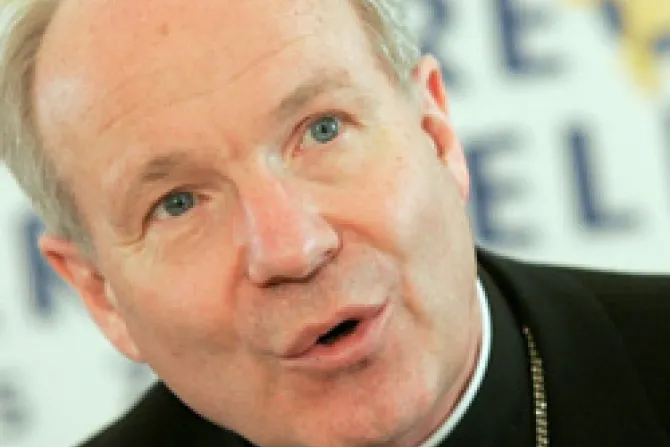Medjugorje, Bosnia and Herzegovina, Nov 16, 2009 / 12:55 pm
Cardinal Christoph Schönborn will visit Medjugorje, the small town in Bosnia-Herzegovina where six young people have allegedly been witnesses of apparitions from the Virgin Mary. But according to the Archdiocese of Vienna, the trip is “completely private” and does not imply a statement from the cardinal on the veracity of the apparitions.
“It was supposed to be a completely private visit, it was not supposed to go out to the internet,” Fr. Johannes Fürnkranz, personal secretary to the Archbishop of Vienna, explained to CNA.
The cardinal’s visit will take place between December 8th and January 4th.
“The cardinal's visit was supposed to be absolutely personal and not public, but since it has been leaked, I can only confirm that it will take place. There is no statement whatsoever involved (in the visit),” Fr. Fürnkranz told CNA.
The local Church authorities, including Bishop Ratko Peric, whose diocese encompasses Medjugorje, have declared that the alleged apparitions are not to be published or promoted.
Bishop Peric has reaffirmed the official statement of his predecessor, Bishop Pavao Zanic, who in July 1987 wrote to the pastor of Medjugorje:
“I demand from you that you remove the 'visionaries' from public display and put an end to their 'visions' in the parish church. They have had 'visions' in Mostar, and earlier in Sarajevo, Visoko and Dubrovnik. Let them now have them at their homes: people say that they had them at their homes during 1981... You must stop talking about apparitions and also cease publicizing messages. The devotions that grew out of the 'apparitions' and their messages must be eliminated, sales of souvenirs and printed material which propagate the 'apparitions' must also stop.”
In June 2009, Bishop Peric addressed the parish in Medjugorje and insisted that “the presumed daily apparitions, known as the 'phenomenon of Medjugorje,' have not been declared as authentic by the Church. Not even after the investigations of various commissions nor after 28 years of media hype. Therefore, brothers and sisters, we cannot behave as if these 'apparitions' are authentic and approved.”
Nevertheless, 22 years later, the popularity of Medjugorje as a Marian destination for pilgrims remains.
Speaking on background, an official at the Congregation for the Doctrine of the Faith told CNA that the Roman dicastery remains behind the bishops of Bosnia-Herzegovina.
“The local bishops have the ultimate authority on this matter, and their arguments against the alleged apparitions are doctrinally solid,” the official said.
Asked if Medjugorje should not be judged by its fruits of many conversions and vocations to the Church, the official responded: “It is not the duty of this Dicastery to make a pastoral assessment, but a doctrinal one. But regarding the argument, it can equally be argued that God can write straight with crooked lines, just as it has been proven in several previous occasions with patently false apparitions.”


